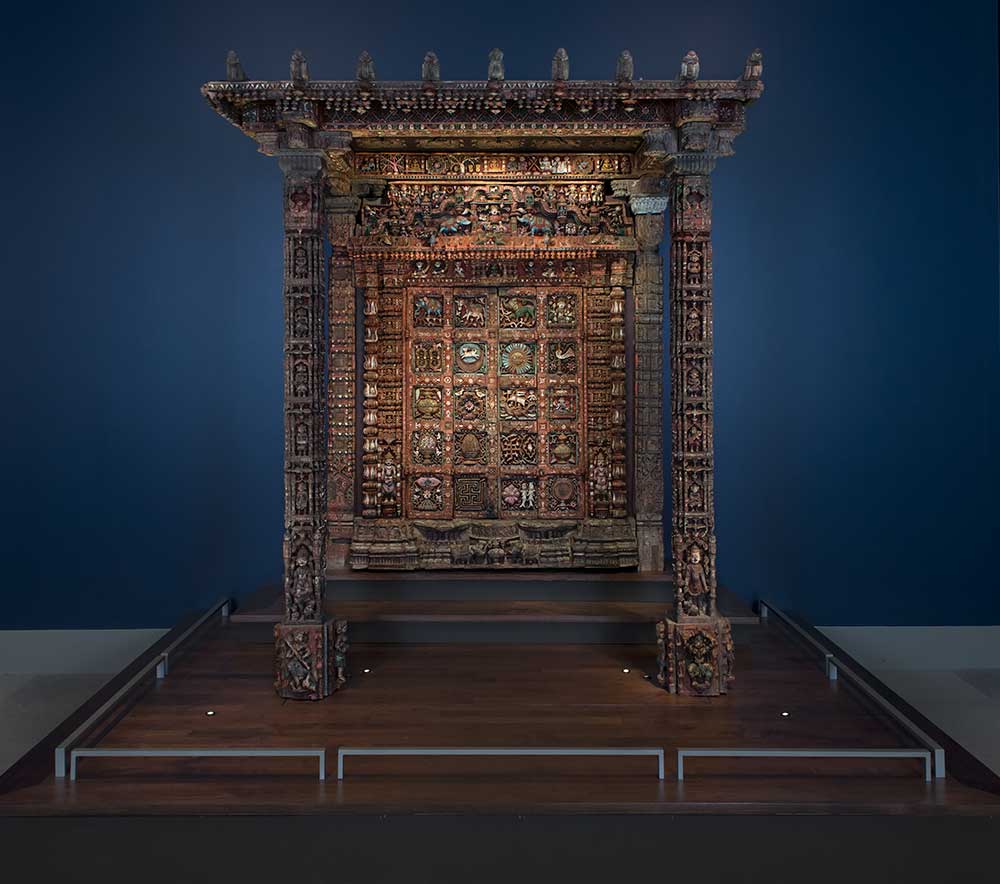STARTS
2014-06-20 08:00:00
Ends
2019-04-14 17:00:00
Admission is free.
Location
A Jain Shrine from India
Revealing a Hidden Treasure: A Jain Shrine from India
Acquired in 1932, this ornately carved and painted shrine spent the next 70 years in storage at the Nelson-Atkins. Before it could go on exhibition, conservators spent over a year cleaning, conserving and studying the shrine. The results of their work are presented in “Revealing a Hidden Treasure: A Jain Shrine from India.”

Conserving and Studying the Jain Shrine
When the shrine came to the museum, it was so dirty that the original paint was undetectable. Grime had become stuck to the varnish (glossy finish) covering the painted wood from years of previous use.
Conservators at the Nelson-Atkins removed the varnish in order to reveal the paint. This process took more than a year! Conservators also undertook scientific studies to determine the age, materials, and history of the shrine.
The Jain Religion and Domestic Shrines
Jainism is an ancient religion from India. Followers are called Jains, and they practice non-violent behaviors to work toward individual perfection. Their ultimate goal is liberation from rebirth. A liberated individual who serves as an exemplar is known as a Jina (victor) also called a Tirthankara (one who fords the waters). Jain practice requires daily veneration of an image of a Jina, either at a community temple or at a home shrine. This shrine is an example of the elaborate ghar derasars (house temples) commonly commissioned by wealthy Jains for private use.